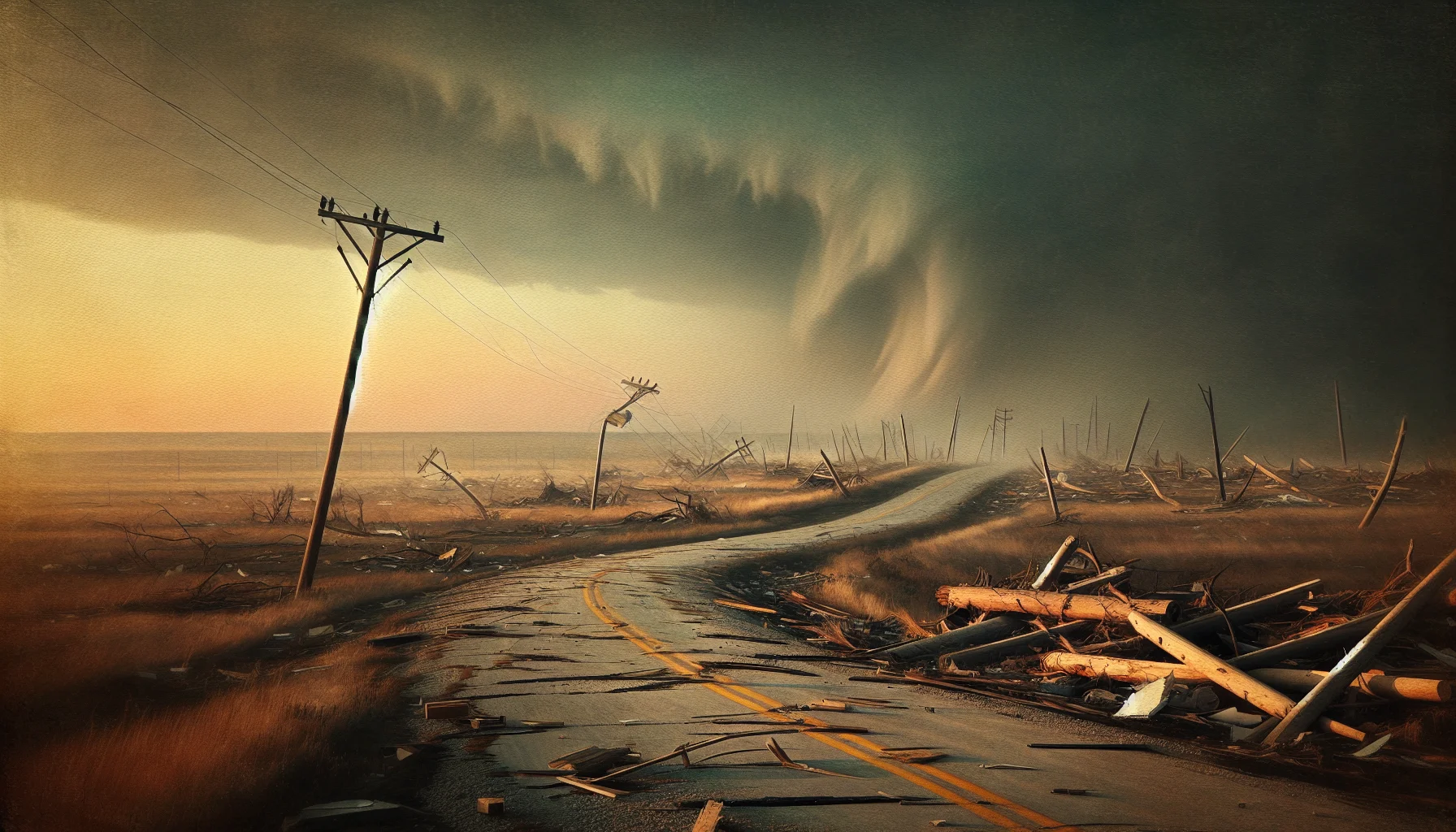
The Lubbock Tornado
by: The Calamity Calendar Team
May 11, 1970
The Calm Before The Storm
In the heart of Texas, nestled within the notorious Tornado Alley, sits Lubbock—a city familiar with the volatile temperament of springtime weather. As residents went about their routines on May 11, 1970, they were largely unaware of the monstrous storm brewing just beyond the horizon. The day had been typical for a Texan spring—warm and languorous clouds hovering under a sun diffused by the haze of the Gulf's moist air. Few could anticipate the chaos that loomed, a menace that would forever alter the landscape and lives in Lubbock.
A History of Turmoil
Lubbock's geography had always made it a player in the capricious game of atmospheric warfare. While the city had faced several smaller twisters over the years, what unfolded that spring night was unprecedented. Cool air sliding down from the Rockies collided with the Gulf's humid breath, setting the stage for an atmospheric collision of disastrous proportions. The conditions were perfect—a powder keg that was about to be ignited.
From Silence to Roar
The silence broke just after 8 p.m. on May 11. Out on the southwestern edge of town, a funnel cloud began its sinister spiral, descending down with a hypnotizing, dreadful grace. Eyewitnesses recall the skies darkening, as though a curtain was being drawn across the sun, ushering in something terrible. At first, the tornado teased, dipping and swirling above the city, unwilling to let its full might known. It wasn't until 9:35 p.m. that the full force of nature came crashing down.
The Deadly Path
The tornado that touched down with terrifying ferocity quickly transformed into an F5—a beast with winds that screamed beyond 200 mph. It plowed through central Lubbock, dragging with it debris and dreams in a path of indiscriminate devastation. Buildings stood crumbling, and massive structures twisted under the relentless force. Between 9:35 and 9:46 p.m., the heart of the city faced its reckoning—a vast swirling column, 1.5 miles wide, charting its eight and a half-mile path of ruin.
Downtown's skyline was altered within moments, with high-rises, once symbols of progress and prosperity, brought low. Residential areas fared no better, caught in the ravenous appetite of the storm. By the time the winds abated around 11 p.m., they left behind a city scarred both physically and emotionally.
Picking up the Pieces
When the winds finally died, the true extent of the tornado's wrath revealed itself under the shivering moonlight. Lubbock's streets were cast into a surreal labyrinth of shattered wood and mangled metal. The tally was horrifying—26 lives lost, 1,500 injured, and more than a thousand homes in ruins. The economic toll was staggering, estimated at $250 million in 1970; today, this figure translates to a weighty $1.7 billion.
Thanks for subscribing!
Mobilizing for Aid
From the chaos, a wave of resilience and humanity emerged. First responders from across Texas poured into Lubbock, their sirens howling through the night. The National Guard swung into action, aiding in the daunting task of search and rescue while the Red Cross set up shelters, offering solace to those stranded in despair.
In the days following, Lubbock's city planners faced tough questions: How could they build a city that defied the capricious nature of the storms looming on the plains? The disaster prompted critical examinations of urban planning and construction codes, aiming to fortify structures against the fury of future storms. Enhanced warning and emergency response systems were put into place to spare others the same fate.
Catalyst for Change
The shadow of that terrible night lingers today, not only in the memories of survivors but also in the annals of meteorological research. The Lubbock tornado became a pivotal case study, guiding advancements in tornado prediction and preparedness. The scars it left have been etched into a resolve to understand and anticipate similar threats.
Through research and innovation, scientists have developed better forecasting techniques, making it possible to give early warnings that can save countless lives. The disaster in Lubbock underscored the importance of understanding tornado dynamics, prompting safer building practices that communities far beyond Texas have since adopted.
Stay in the Loop!
Become a Calamity Insider and get exclusive Calamity Calendar updates delivered straight to your inbox.
Thanks! You're now subscribed.